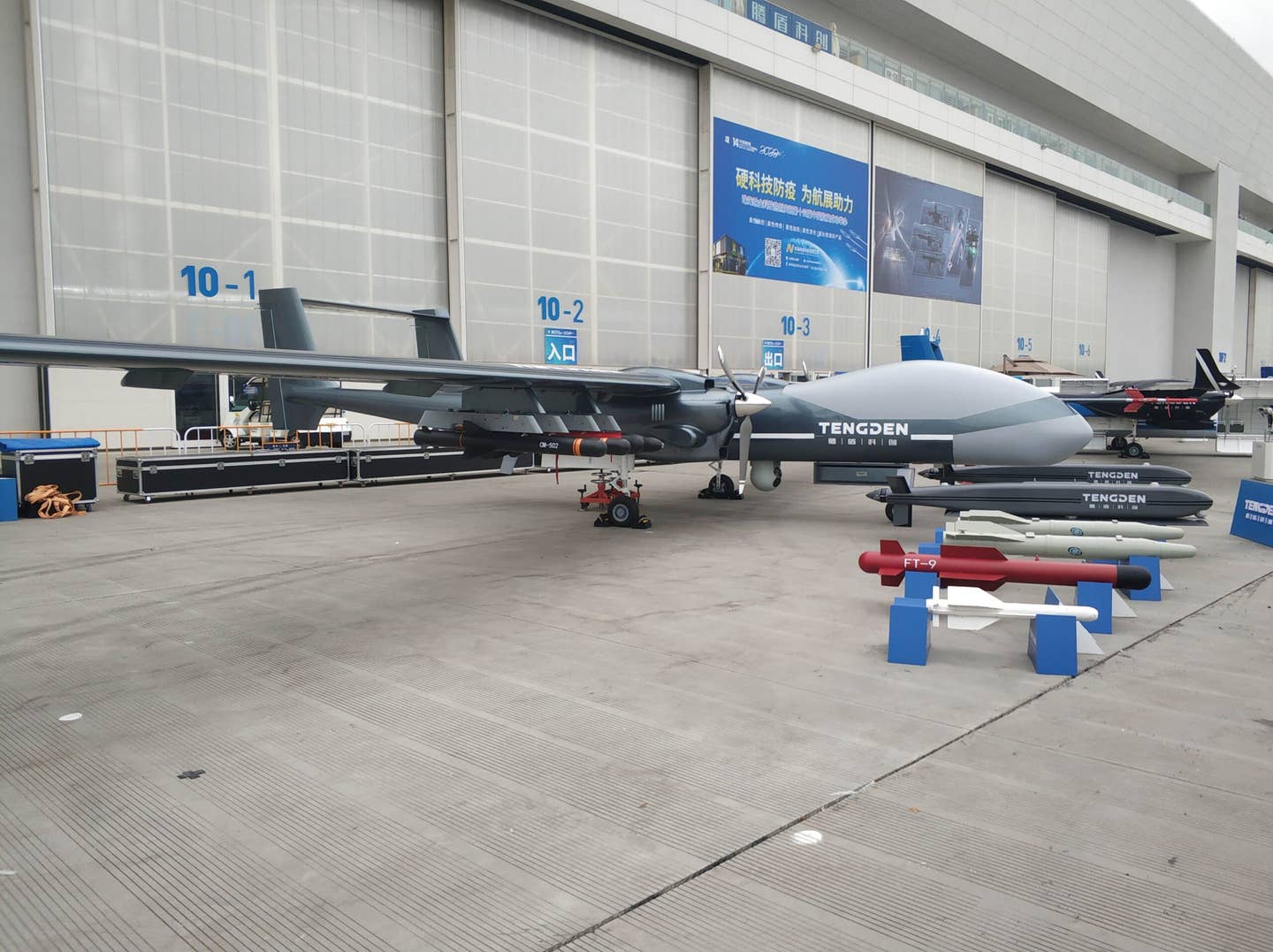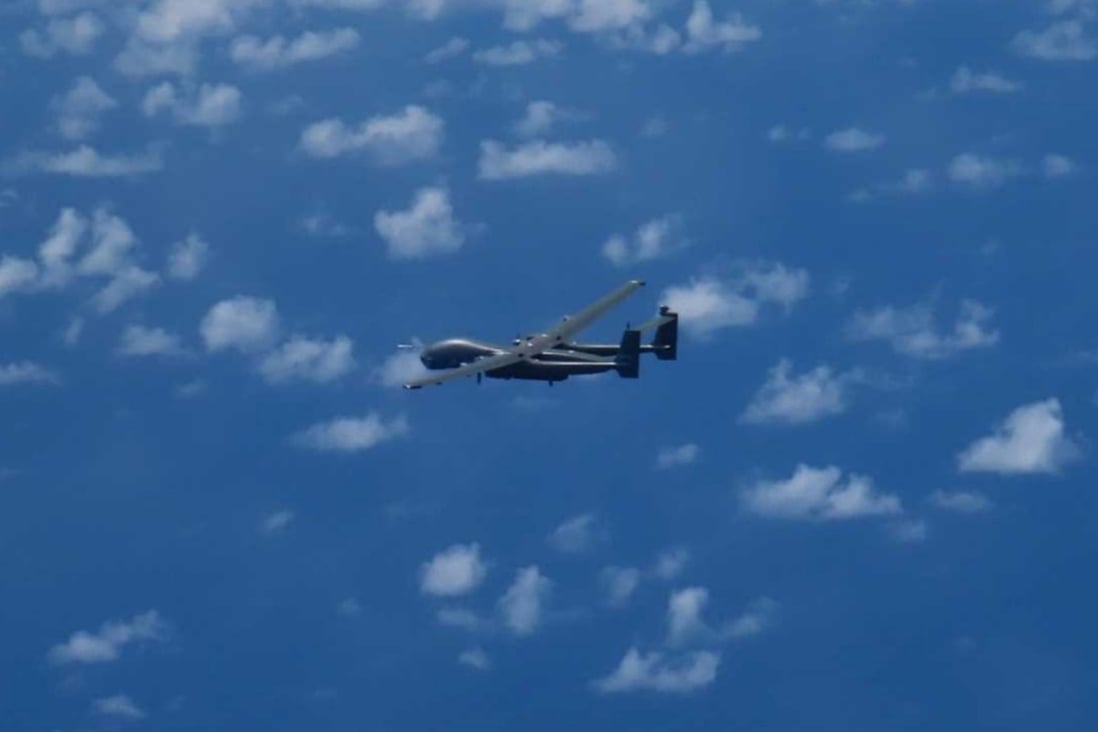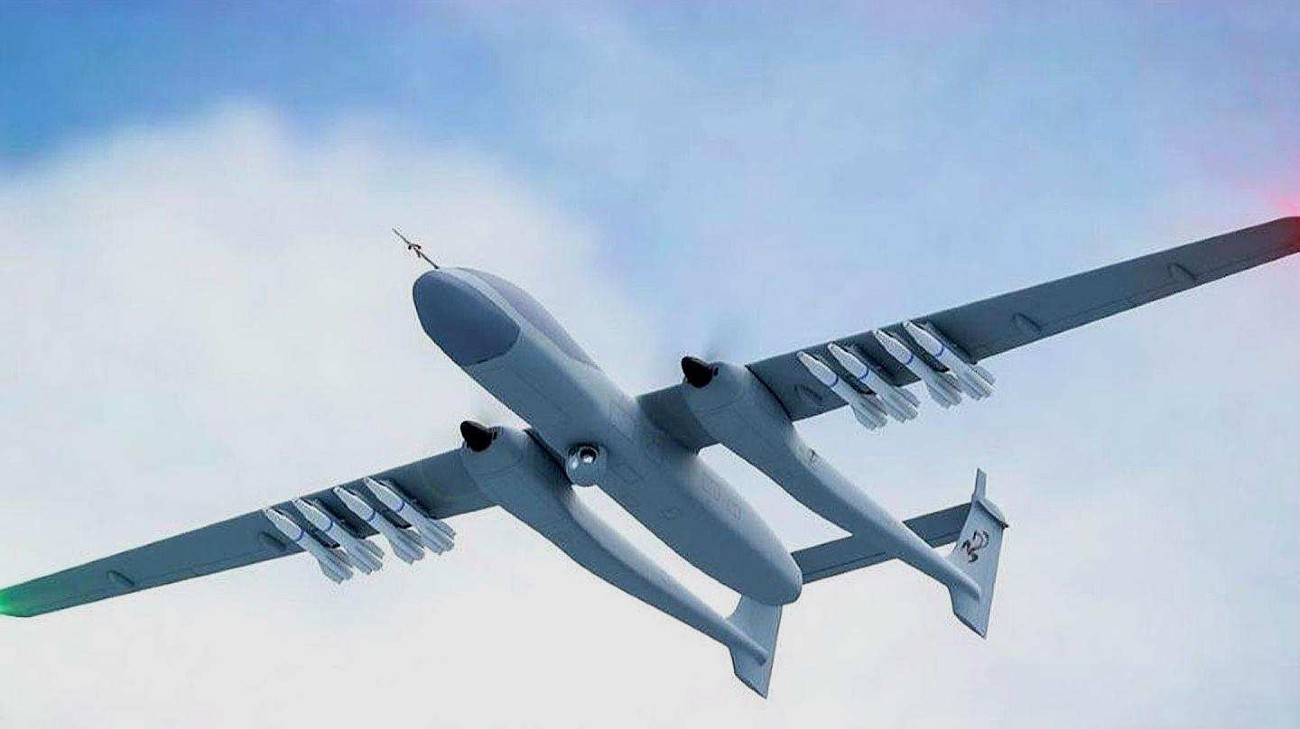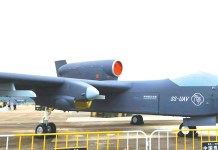In a rare encirclement, a Chinese TB-001 Scorpion drone capable of carrying heavy weapons payload conducted an unprecedented mission by flying around Taiwan on April 28.
The drone’s flight path included crossing the Bashi Channel, which divides Taiwan from the Philippines, and flying up the eastern coast of Taiwan before returning to the Chinese coast.
In addition, a BZK-005, another Chinese medium-altitude and long-endurance drone, flew a similar course and traveled part of the way around Taiwan before turning back roughly midway between the island and the median line, which serves as a de facto boundary between Taiwan and mainland China.
Local reports indicate that this is the first instance of Taiwan’s Ministry of National Defense publicly acknowledging a PLA aircraft encircling the island in this manner.
Taiwan’s defense ministry reported detecting 38 Chinese aircraft, including the TB-001 drone, flying around the island between 6 am (10:00 GMT) on April 27 and 6 am on April 28.
38 PLA aircraft and 6 PLAN vessels around Taiwan were detected by 6 a.m.(UTC+8) today. R.O.C. Armed Forces have monitored the situation and tasked CAP aircraft, Navy vessels, and land-based missile systems to respond these activities. pic.twitter.com/SiSwSWls4j
— 國防部 Ministry of National Defense, R.O.C. ?? (@MoNDefense) April 28, 2023
Out of those 28 aircraft, 19 aircraft either intruded into the southwest, southeast and northeast Air Defense Identification Zones (ADIZ) of Taiwan or crossed the median line of the Taiwan Strait.
The frequency of PLA aircraft crossing the median line has recently increased. In addition to the pair of drones, the group of 19 planes that breached the median line and/or entered the ADIZ included a mix of different aircraft.
Among them were five Su-30 and two J-16 fighter jets, eight J-10 fighter jets, one Y-8 anti-submarine warfare aircraft, and another reconnaissance-configured Y-8 variant.
Taiwan’s Ministry of National Defense said they have been monitoring the situation and assigned Combat Air Patrol aircraft, navy ships, and land-based missile systems to respond to these activities. This is a standard response to incidents like these.

During this period, the ministry has also detected six PLA Navy vessels in the vicinity of Taiwan.
Both the TB-001 and BZK-005 have previously been observed performing operations in the East China Sea. In general, long-range Chinese drones are commonly used for intelligence, surveillance, and reconnaissance (ISR) over the ocean in the first island chain.
Low-Cost Strategy To Breach Island’s Air Defense Zone?
The Chinese military has been using advanced combat drones to conduct “island encirclement patrols” around Taiwan since 2020.
During a meeting of Taiwan’s Foreign and National Defense Committee in March, Defense Minister Chiu Kuo-cheng expressed concerns that the PLA’s increasing aircraft and vessel operations around Taiwan could be a way to test the limits of Taiwan’s 24-nautical mile perimeter.
The PLA has previously conducted “island encirclement” missions using nuclear-capable H-6 bombers. However, these missions have been limited to brief ventures along the east coast of Taiwan before swinging back, as seen in the November 21, 2021 mission.
However, the deployment of the TB-001 drone to conduct an extended mission around Taiwan is an unprecedented move that has rarely been seen before.
The latest move, according to experts, suggested the mainland was attempting to breach the self-governing island’s 24-nautical mile air defense identification zone using a low-cost tactic.

Lu Li-shih, a former instructor at Taiwan’s Naval Academy in Kaohsiung, told the SCMP that it is highly probable that the PLA is attempting to breach Taiwan’s 24-nautical mile limit using novel, cost-effective strategies.
He also notes that while the PLA has previously flown drones into Taiwanese airspace, this is the first instance in which drones have been utilized to encircle the entire island.
According to him, this operation is not only a promising strategy for harassing Taiwanese military forces but also an inexpensive tactic for creating genuine threats to Taiwan’s 24-nautical mile sea and air limit.

Lu stated that the PLA drones’ slow speed made it difficult for Taiwan’s air force to scramble warplanes to monitor or expel them quickly, and shooting them down with costly missiles would also be challenging.
Additionally, the former instructor mentioned that drones could be used for psychological warfare by taking high-resolution images and videos using their onboard cameras for propaganda purposes, which could intimidate the public.
The TB-001 drone is a valuable asset for China as it efficiently gathers different types of intelligence over and around the strategically significant Taiwan Strait.
The drone has an estimated range of 1,860 miles and reportedly can operate for up to 35 hours.
The drone can venture around Taiwan, conduct radar mapping, and classify electronic emissions from Taiwanese air defense systems and other military assets on the island’s east coast.
This makes it a powerful asset for gathering intelligence, potentially providing the PLA an advantage in future conflicts or negotiations.
- Contact the author at ashishmichel(at)gmail.com
- Follow EurAsian Times on Google News




